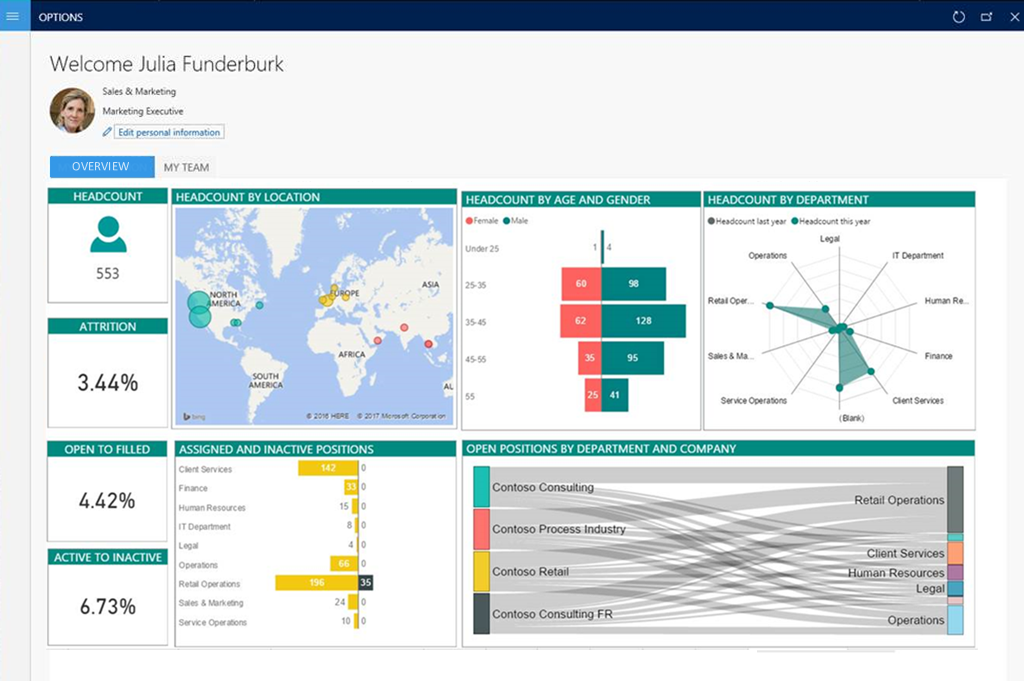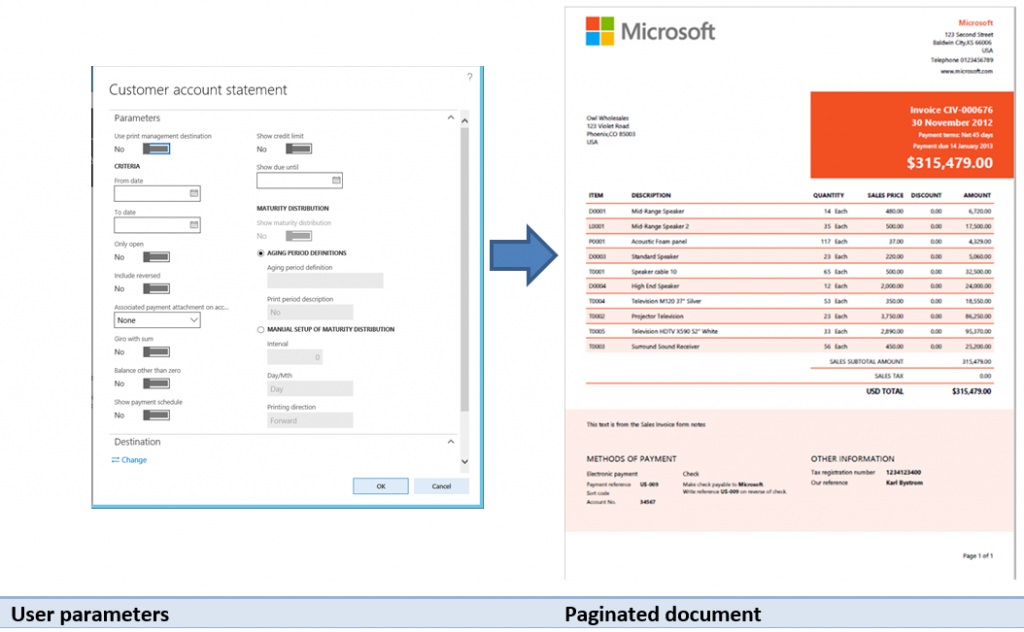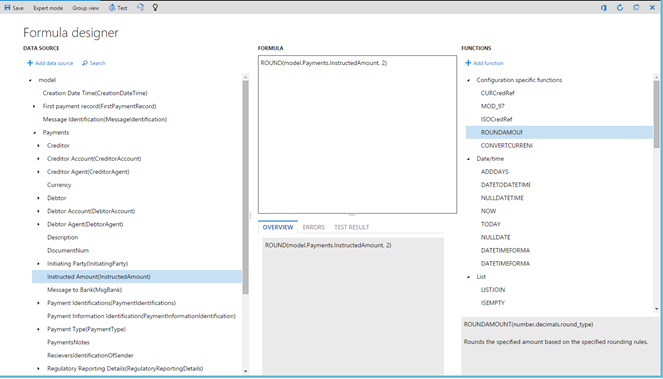Reporting and analytics with Power BI home page
This article points you to resources that you can use to learn more about the business intelligence (BI) and reporting tools that are available.
Get started
- Information access and reporting
- Tech Talk: Reporting options (video)
- finance and operations: Power BI Analytics & Reporting Services blog (blog)
Analytical workspaces
Workspaces can use rich infographics and visuals that are supported by Microsoft Power BI. These infographics and visuals include many controls that are provided by third parties. Therefore, workspaces can provide a highly visual, interactive experience for users.
Users can interact with data by clicking or touching visuals on the page. They can see cause and effect, and do simple what-if operations without leaving the workspace. Thanks to stunning, interactive visuals, your users will have fun exploring data and discovering hidden trends.

To learn more, see the following topics:
- Embedded Power BI in workspaces
- Power BI Embedded integration
- Add analytics to workspaces by using Power BI Embedded
- Help secure analytical workspaces and reports by using Power BI Embedded
- Power BI content home page
Business documents and printing
Reporting solutions are often used to capture and communicate the details of business transactions. Therefore, a reporting solution must be able to produce physical manifestations of business data by using existing devices, such as network printers. Examples of business documents include sales invoices, customer statements, and checks.
To learn more, see the following topics:
- Document Reporting Services
- Document printing overview
- Install the Document Routing Agent to enable network printing
Electronic reporting
Electronic reporting (ER) is the tool that you use to configure electronic document formats that comply with the legal requirements of various countries or regions. The applications of electronic reporting include financial auditing, tax reporting, and electronic invoicing.
To learn more, see the following topics:
- Electronic reporting (ER) overview
- Manage the Electronic reporting (ER) configuration lifecycle
- Create Electronic reporting (ER) configurations
Financial reporting
Standard financial reports are provided that use the default main account categories. You can use the report designer to create or modify traditional financial statements, such as income statements and balance sheets. You can then share the results with other members of your organization. Examples of financial reporting include balance sheets, cash flow, and summary trial balance year over year.
To learn more, see the following topics:
Technical reference reports
The following reports provide reference information about the objects:


